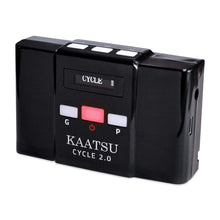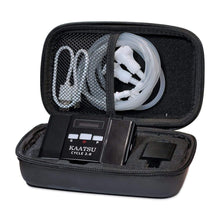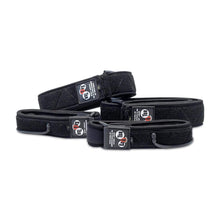What if I told you there was a training device that would simulate a HIIT session, would take less than 30 minutes and could be done with half the effort? Impossible right?
Meet Kaatsu .... the industry Gold standard in blood flow restriction training and recovery. Invented in Japan in 1966 and supported by decades of research, this is the must-have training modality for every athlete looking to improve upon a personal best.
Patented pneumatic equipment enables your arms and legs to modify venous flow which leads to quicker recovery, HGH secretion, increased nitric oxide production and improved metabolic flexibility. To say this is too good to be true is an understatement.
Still not convinced? This is what Olympic Gold Medalist - Bode Miller had to say about the benefits of Kaatsu Training:
"I think it's also going to be the most widely beneficial [training method] — good for people from 12 years old to 80 and from elite athletes and law enforcement and military to stay-at-home moms and dads. There's an application for every human on the planet with this."
Kaatsu means Ka (additional) atsu (pressure) and is computer controlled device that utilizes pressurized bands around your upper arms and legs to reduce the amount of blood flowing back from the muscles in your extremities.
By slowing down the blood flow back to the heart, your limbs become engorged in blood, filling normally unused capillaries and mobilizing muscle fibers, while also raising the concentration of lactic acid in the blood — similar to what happens during prolonged exercise.
This physiological response is a result of the brain being tricked into thinking that the body is undergoing a massive workout, triggering the pituitary gland to flood the body with growth hormones.
“Other forms of exercise may cause some degree of blood-flow restriction while being performed, but it is not consistent, and once you stop the exercise to rest between sets, blood flow is quickly reestablished and the muscle somewhat recovers,” explains Alan Mikesky, professor of kinesiology at Indiana University-Purdue University Indianapolis. “With Kaatsu training, blood-flow restriction is maintained throughout the duration of the exercise, even during the rests between sets. As a result, the muscle can’t recover as quickly.” This creates, adds Mikesky, a “unique muscle-cell environment that provides the stimuli that cause muscle adaptations in size and strength.” Stimuli that Kaatsu kicks into gear in about half the time using about a third the amount of weight.
Package includes:
- Includes 4 KAATSU Air Bands (2 for arms + 2 legs)
- Rechargeable battery with USB-C charger
Air Bands sizes:
ARMS
LEGS
Kaatsu Training Modes
1. Strength Training
As will any Kaatsu Training, your aim is to get to complete muscle failure during the exercise to stimulate the maximum recovery response from your body to build lean muscle mass. Start with just bodyweight exercises and as you become familiar with the exercises, you can add additional weights to your training (up to 30% of your maximum weight you would normally lift).
- Start in the Kaatsu in training mode at a pressure of 350 to 375. Increase up to 400 after a few sessions.
- Do 30 bodyweight squats, rest 30 seconds
- Do 20 bodyweight squats, rest 30 seconds
- Do 15 bodyweight squats, rest 30 seconds
- Do 15 bodyweight squats, rest 30 seconds
Rest for 1 minute
- Do 30 alternating leg lunges, rest 30 seconds
- Do 20 alternating leg lunges, rest 30 seconds
- Do 15 alternating leg lunges, rest 30 seconds
- Do 15 alternating leg lunges, rest 30 seconds
Workout Complete!
My favorite Kaatsu training is on the bike on a trainer. Start with a 10 to 15-minute warm-up. Get off the bike and put on the leg bands. Set your pressure to 350 to 375.
- Workout 1: Do a Ramp Test Workout, like on Trainer Road. This gradually increases your pressure over 30 to 60 seconds in small increments. Aim to complete 10 to 15 minutes until you can't pedal above a cadence of 40 RPMs.
- Workout 2: Do 1-minute intervals with 30 seconds rest in between intervals. Do this until failure (i.e. cadence below 40 RPMs). Try to get 10 to 15 intervals before failure.
- Then cool down for 10 to 15 minutes, you can add on a low-intensity endurance workout afterward if are looking for more training time.
3. Recovery Using Kaatsu Cycle:
This workout is done at rest. You just lie on the floor or couch. The bands will inflate and deflate on their own, building up pressure in your legs and then releasing it. This flushed your circulatory system, leftover metabolic waste, and aids in draining your lymphatic system. It is an incredible recovery protocol post-workout, post-travel (flying), and before bed. Set the pressure much lower than training levels, I suggest 250 to 275. I like to do 3 to 5 rounds of the Kaatsu Cycle in a session.





